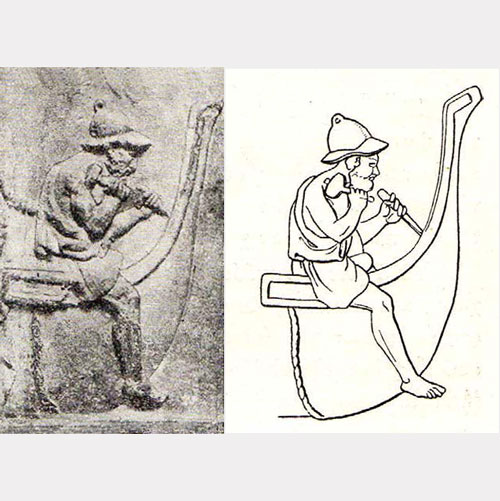
HOW THE ANCIENT GREEKS USED WOOD
In antiquity, the use of wood for building purposes was widespread in both public and private buildings. It is natural, however, that this material has not been preserved until today.
However, in watertight parts, protected from atmospheric effects such as inside the vertebrae of the columns of classical monuments in special carvings, intact woods of cypress, cedar or cornel were found, which in the inscriptions are called rudders, as well as their axes of rotation were made of wild olives, the poles.
Moreover, the various stone-built shrines, many of which are still preserved, are in fact a transfer to the stone of traditional wooden forms that have been applied in Greece since the Minoan years.
It is therefore clear that in ancient Greece wood was used for building purposes even for the embankment of the walls and the shelters by closing the brick walls.
The types of wood
The Greeks, on the other hand, used a variety of wood for building purposes, on the other hand they knew that the different woods differ in their hardness, durability, resistance to grief or bending, hygroscopicity or that they react differently when exposed to humidity or drought they knew also that the same wood has a different value depending on its age or the season of the year it was cut or, depending on its origin.
They usually used wood as building material for the construction of floors or roofs of the following trees:
• Oak: it was very difficult to process, used it for building entire temples and shrines, especially for pillars, thresholds, quadrupeds and marble doors, for obelisks, for roofs, underground structures, sometimes for shipbuilding.
• Aria: a kind of oak, used as a shaft for hoisting machines.
• Prinos: a kind of oak, used mainly in luxury door cocks and as axle wheels.
• Cornel (Krania): not used as building material but only for small objects.
• Fig tree (Sykia): provided solid wood for vertical supports and scaffolding.
• Mulberry tree: used mainly in Egypt.
• Linden tree: used in door and floor flow.
• Thia: a cypress species was used in luxurious buildings on doors and floors
• Cedar: it had large dimensions and was long-lasting, used to support weights, placed horizontally on the floor and ceiling, but also on the scales and doors as well as on the market. Different types of cedar ware used for shipbuilding purposes as it had the advantage of sticking easily.
• Fir: durable and durable, but attacked by caries, it was used primarily for roofing beams for roofs and for doors.
• Cypress: is resistant to rot, moisture and time; its woods were long and had the same building use as cedar.
• Elm: very durable material, used in the luxury doors on the gusset doors, rails and doors, floor panels, pulleys, chariot wheels, hammer bearings and dowels.
• Pyxos: its wood was considered to be aseptic, found in northern Greece and Italy, was used for wooden posts and cranks, as well as for doors, ceilings and columns.
• Walnut: solid and durable wood was used in underground constructions and ceilings because it had long beams and for planks.
• Beech: does not rot in the water but instead improves. It was used for support contractions.
• Olive tree: not affected by caries, used for small beams and vertical stakes, for brick walls, for control or link cubes.
• Melia: used for thresholds and other door parts, for door levers and dowels.
• Acanth (Acacia): strong aseptic woods were used on roofs and shipbuilding.
• Phoenix (Palm tree): soft but strong wood, in antiquity believed that it easily break into pieces something that is not true. It was used, probably because of its softness for the construction of models.
• Vine: Hard and durable wood was used to build columns and stairs. Later use of this wood was abandoned.
• Lotus: Long-lasting and aseptic wood, used for decorative purposes, ie veneers, but also for door cocks.
• Ebony: black, dense, solid, durable and aseptic. It was used in luxurious constructions.
Source: Democritus University of Thrace – Department of Civil Engineering – Diocles program
